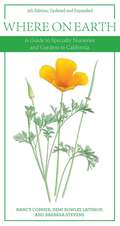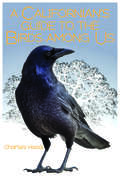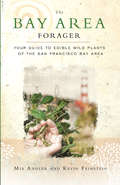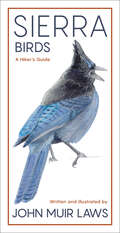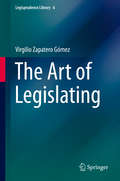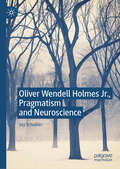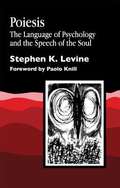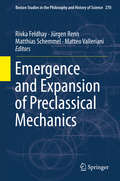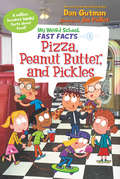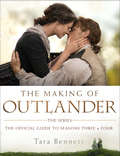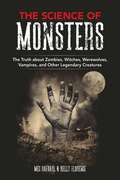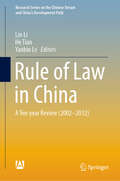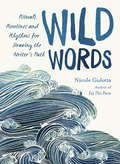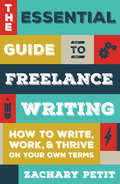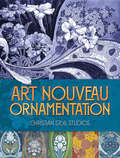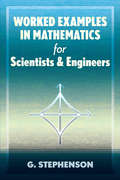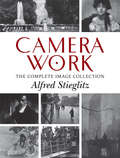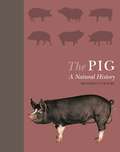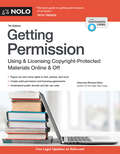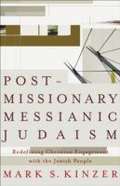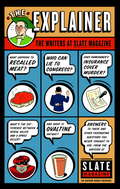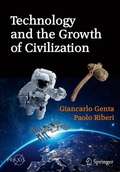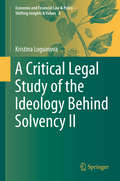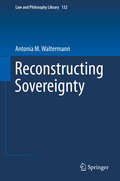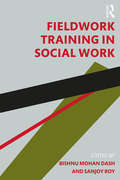- Table View
- List View
Where on Earth: A Guide to Specialty Nurseries and Gardens in California
by Nancy Conner Barbara Stevens Demi LathropEver since its initial publication in 1993, this guide to California's specialty plant nurseries has been an invaluable tool for gardeners and landscapers, and it is now available in an expanded and completely revised edition. Organized by geographic region, each listing provides essential information, including address, contact information, hours, plant offerings, and a detailed description of the facility and its owners. In addition to featuring specialty nurseries, Where on Earth catalogs notable garden centers, plant societies, education programs, and horticultural attractions throughout the state, as well as mail-order sources for bulbs, seeds, and rhizomes. The coauthors also include twelve essays, one for each region, that address that area's special features and gardening concerns. Whether you're searching for antique roses on the foggy North Coast, water-wise succulents and native shrubs around Los Angeles, or a palm doctor for your sickly cycads in the Central Valley, this book gives current, detailed advice for plant lovers to see, shop, and savor.
A Californian’s Guide to the Birds among Us
by Charles HoodAs its sister title, A Californian's Guide to the Trees among Us, did for arboreal varieties, this new guidebook introduces casual birders to 120 of California's most easily seen bird species—native and exotic alike—as found in a mix of urban, suburban, and traditionally natural habitats. Full-color images and clear, direct descriptions make identification easy, and author Charles Hood supplements the essential information with surprising facts and trivia, including endangered-species recovery stories and the world record for grasshoppers eaten by one flycatcher in a single day. In sections addressing which gear to buy, where to go birdwatching, and how to read a birdsong transcription, Hood encourages readers to take ownership of their experiences, no matter their level of ornithological expertise. This accurate, lively, and even quotable guide will inspire people to notice nature more closely and find joy in interacting with the astounding diversity of avian life in California.
The Bay Area Forager: Your Guide to Edible Wild Plants of the San Francisco Bay Area
by Mia Andler Kevin FeinsteinReading this guidebook is like taking a wild foods walk with foraging experts Mia Andler and Kevin Feinstein: it gives practical advice for gathering edible wild plants in the Bay Area in a voice that is friendly and suffused with rich personal knowledge. The authors provide thorough descriptions of where to find each of the region's most readily available plants, and they give clear instructions for harvesting them responsibly. Large, detailed photographs help readers to identify plants easily. Also included are mouth-watering recipes such as cattail crêpes, cherry laurel cordial, fiddlehead fusilli, and rosehip soup. Ideal for any experience level, The Bay Area Forager invites readers to deepen their relationship with their environment.
Sierra Birds: A Hiker's Guide
by John LawsOver 35,000 copies sold! As a naturalist managing the field studies program at the California Academy of Sciences, John Muir Laws noticed that novice birders often distinguish birds by color and size rather than species. This inspired him to create Sierra Birds: A Hiker's Guide, a unique book that assumes no prior birding knowledge on the part of the reader. Color-coded keys eliminate the time-consuming frustration of thumbing randomly through a guide, and a cross-index is also included for more advanced birders. All this in a format that is simply organized, lightweight, and small enough to tuck inside a pocket. A first-rate naturalist, Laws is also an accomplished artist. His illustrations are lively, colorful, and accurate, and drawn to represent species in the manner in which one generally sees them in the field.
The Art of Legislating (Legisprudence Library #6)
by Virgilio Zapatero GómezAny contemporary state presents itself as committed to the “rule of law”, and this notion is perhaps the most powerful political ideal within the current global discourse on legal and political institutions. Despite being a contested concept, the rule of law is generally recognised as meaning that government is bound in all its actions by fixed and public rules, and that these rules respect certain formal requirements and are enforced by an independent judiciary. This book focuses on formal legality and the question of how to achieve good laws—a topic that was famously addressed by the 18th century enlightened thinkers, but also by prominent legal scholars of our time. Historically, the canon of “good legislation” demanded generality, publicity and accessibility, and comprehensibility of laws; non-retroactivity; consistency; the possibility of complying with legal obligations and prohibitions; stability; and congruency between enacted laws and their application. All these are valuable ideals that should not be abandoned in today’s legal systems, particularly in view of the silent revolution that is transforming our legality-based “states of law” into jurisdictional states. Such ideals are still worth pursuing for those who believe in representative democracy, in the rule of law and in the dignity of legislation. The idea for the book stemmed from the author’s parliamentary and governmental experience; he was responsible for the Government of Spain’s legislative co-ordination from 1982 to 1993, which were years of intensive legislative production. The more than five hundred laws (and thousands of decrees) elaborated in this period profoundly changed all sectors of the legal order inherited from Franco’s dictatorship, and laid the foundations of a new social and democratic system. For an academic, this was an exciting experience, which offered a unique opportunity to put the theory of legislation to the test. Reflecting and elaborating on this experience, the book not only increases scholarly awareness of how laws are made, but above all, improves the quality of legislation and as a result the rule of law.
Oliver Wendell Holmes Jr., Pragmatism and Neuroscience
by Jay SchulkinThis book explores the cultures of philosophy and the law as they interact with neuroscience and biology, through the perspective of American jurist Oliver Wendell Holmes’ Jr., and the pragmatist tradition of John Dewey. Schulkin proposes that human problem solving and the law are tied to a naturalistic, realistic and an anthropological understanding of the human condition. The situated character of legal reasoning, given its complexity, like reasoning in neuroscience, can be notoriously fallible. Legal and scientific reasoning is to be understood within a broader context in order to emphasize both the continuity and the porous relationship between the two. Some facts of neuroscience fit easily into discussions of human experience and the law. However, it is important not to oversell neuroscience: a meeting of law and neuroscience is unlikely to prove persuasive in the courtroom any time soon. Nevertheless, as knowledge of neuroscience becomes more reliable and more easily accepted by both the larger legislative community and in the wider public, through which neuroscience filters into epistemic and judicial reliability, the two will ultimately find themselves in front of a judge. A pragmatist view of neuroscience will aid and underlie these events.
Poiesis: The Language of Psychology and the Speech of the Soul
by Stephen LevineStephen K. Levine argues that poiesis, the creative act, is also the act by which we affirm our identity and humanity; in exploring this subject he shows the essential affinity of the creative and the therapeutic processes and explores the nature of creative acts. This book looks in detail at the connections between expressive arts, such as poetry, and psychology and develops understanding of the theoretical foundations which connect the arts and psychotherapy. It considers the context in which modern therapy emerged and looks at various aspects of different arts therapies. It provides a much-needed step in the theoretical underpinning of the expressive therapies.
Emergence and Expansion of Pre-Classical Mechanics (Boston Studies in the Philosophy and History of Science #270)
by Jürgen Renn Matthias Schemmel Matteo Valleriani Rivka FeldhayThis book is divided into two sections. The first section is concerned with the emergence and expansion of a form of mechanical knowledge defined by us as pre-classical mechanics. The definition purports to the period roughly between the 15th and the 17th century, before classical mechanics was formulated as a coherent and comprehensive mechanical theory in the sequel of Newton's work. The investigation of problems that were isolated from each other at the time but cohered into some kind of stable broad intellectual framework characterizes pre-classical mechanics. The second section is dedicated to specific case studies that present the application of a pre-classical framework to determined problems and to the investigation of specific natural phenomena. It consists of five case studies that illustrate in detail a reconstruction of pre-classical mechanics in particular constellations. Early modern theoretical, technical and social contexts transformed ancient and medieval mechanical knowledge in the course of its transmission.
My Weird School Fast Facts: Pizza, Peanut Butter, and Pickles (My Weird School Fast Facts #8)
by Dan GutmanThink fast with A.J. and Andrea from My Weird School!Did you know that the biggest chocolate bar weighed over 12,000 pounds? Did you know that you can stop yourself from crying while chopping onions by holding a slice of bread in your mouth?Learn more weird-but-true food facts with A.J. and Andrea from Dan Gutman’s bestselling My Weird School series. This highly illustrated series of nonfiction books features hundreds of hysterical facts, plus lots of photos and illustrations.Whether you’re a kid who wants to learn more about food or simply someone who wants to know the average cost of lunch in 1915, this is the book for you!With more than 23 million books sold, the My Weird School series really gets kids reading!
The Making of Outlander: The Official Guide to Seasons Three & Four (Outlander)
by Tara BennettSee how the story of Jamie Frasier and Claire Beauchamp Randall comes to life on the screen with this official, photo-filled companion to the third and fourth seasons of the hit Starz television series based on Diana Gabaldon’s bestselling Outlander novels. From its very first episode, the Outlander TV series transported its viewers back in time, taking us inside the world of Diana Gabaldon’s beloved series. From the Scottish Highlands, to the courts of Versailles, to the shores of America, Jamie and Claire’s epic adventure is captured in gorgeous detail. Now, travel even deeper into the world of Outlander with this must-have insider guide from New York Times bestselling author and television critic Tara Bennett. Picking up where The Making of Outlander: Seasons One & Two left off, this lavishly illustrated collectors’ item covers seasons three and four, bringing readers behind the scenes and straight onto the set of the show. You’ll find exclusive interviews with cast members, including detailed conversations with Caitriona Balfe and Sam Heughan (on-screen couple and real-life friends), as well as the writers, producers, musicians, costume designers, set decorators, technicians, and more whose hard work and cinematic magic brings the world of Outlander to life on the screen. Every page features gorgeous photographs of the cast, costumes, and set design, including both official cast photography and never-before-seen candids from on set. The Making of Outlander: Seasons Three & Four is the perfect gift for the Sassenach in your life—and the only way to survive a Droughtlander!
The Science of Monsters: The Truth about Zombies, Witches, Werewolves, Vampires, and Other Legendary Creatures
by Meg Hafdahl Kelly FlorenceA must-have for any fan of horror and fantasy movies—Night of the Living Dead, A Nightmare on Elm Street, The Shining (Stephen King), and so many more! If you love film that scares, and want to believe that zombies, vampires, and other deadly and terrifying creatures could be real, let Meg Hafdahl and Kelly Florence, the women behind the Horror Rewind podcast called “the best horror film podcast out there” by Film Daddy, take you to the world where horror and science meet. How would a zombie really decompose in Night of the Living Dead?Are there instances of shape shifting in nature like in The Wolf Man?What is the science behind the night terrors that inspired the creation of Freddy Krueger?Is there scientific data supporting ghost detection like the tools used in Poltergeist?What is the psychological drive that compels cannibals like Hannibal Lecter?How does modern medicine and therapy differ from what would have been offered to Norman Bates in 1960?How are subliminal messages related to propaganda or brainwashing like in The Ring?What would the scientific explanation be for witches possessing people like in Carrie?Was The Blair Witch Project based on any real or imagined creature that came before?”And so much more! Gothic media moguls Meg Hafdahl and Kelly Florence revisit the films from their childhood to discover the science behind the fear. Join Kelly and Meg as they unravel the medical mysteries and scientific marvels that inspired the creation of famous monsters like Nosferatu, Norman Bates, Dracula, Frankenstein, and many more. An approachable and frightfully fun examination of what goes bump in the night, The Science of Monsters will thrill every horror fan.
Rule of Law in China: A Ten-year Review (2002-2012) (Research Series on the Chinese Dream and China’s Development Path #1)
by Lin Li He Tian Yanbin LvThis volume summarizes the achievements on rule of law in China for the ten years from 2002 to 2012, particularly focusing on areas such as judicial review, anti-monopoly, reform of government agencies, the circulation of rural Land contracted management rights, and the protection of children’s rights. It also considers the prospects for rule of law in China in the future. With numerous tables and screenshots to illustrate the text and provide a comprehensive overview and insights into China’s rule of law establishment, it appeals to readers interested in judicial reform, rural medical service, children’s rights protection and anti-monopoly.
Wild Words: Rituals, Routines, and Rhythms for Braving the Writer's Path
by Nicole GulottaA guide for the next generation of writers—self-care rituals, creativity-generating rhythms, and personalized strategies for embracing a creative life.Wild Words is an invitation to explore the intersection of your writing practice with everything else in your busy life. Through personal stories and practical lessons you’ll learn how to enter a new relationship with your creativity, one that honors where you’ve been, where you’re headed, and where you are today. Discover methods to support a sustainable writing practice, clarifying and nourishing routines, an understanding of your own creative history, and guidance on how to make small but powerful mind-set shifts (such as how to see a career as a partner rather than an obstacle). Above all, Wild Words encourages you to approach creativity through a seasonal lens and helps you untangle the messy process of embracing your circumstances, trusting your voice, and making time to put pen to paper, season after season.
The Essential Guide to Freelance Writing: How to Write, Work, and Thrive on Your Own Terms
by Zachary PetitPrime Your Freelance Writing Career for Success!So you want to be a freelance writer. Great! But now you're faced with a laundry list of questions: Should I freelance full time or part time? Should I write for magazines, newspapers, or online markets? How do I dream up the perfect article idea, and how do I pitch it successfully? How do I negotiate contracts, foster relationships with editors, and start getting steady work while avoiding financial panic attacks and unpleasant ulcers?The Essential Guide to Freelance Writing answers all of these questions--and much more. From breaking in to navigating the basics of the business, this book is your road map to a fruitful and rewarding freelance life. You'll learn how to:Dig into various markets, including consumer magazines, trade journals, newspapers, and online venues.Make your digital mark and build your writing platform.Pitch like a pro and craft solid query letters that get responses.Conduct professional interviews in person, by phone, or by e-mail.Write and structure various types of articles, from front-of-the-book pieces to profiles and features.Quit your lackluster day job, and live the life you've always wanted.Filled with insider secrets, candid advice, and Zachary Petit's trademark humor and blunt honesty, The Essential Guide to Freelance Writing won't just show you how to survive your freelancing writing career--it will teach you how to truly thrive.
Art Nouveau Ornamentation
by Christian StollThis splendid source of authentic Art Nouveau designs presents more than 90 breathtaking plates, ranging from single to full color, selected from rare originals of a renowned German studio's stock portfolios.
Worked Examples in Mathematics for Scientists and Engineers (Dover Books on Mathematics)
by G. StephensonThis rich collection of fully worked problems in many areas of mathematics covers all the important subjects students are likely to encounter in their courses, from introductory to final-year undergraduate classes. Because lecture courses tend to focus on theory rather than examples, these exercises offer a valuable complement to classroom teachings, promoting the understanding of mathematical techniques and helping students prepare for exams. They will prove useful to undergraduates in mathematics; students in engineering, physics, and chemistry; and postgraduate scientists looking for a way to refresh their skills in specific topics.The problems can supplement lecture notes and any conventional text. Starting with functions, inequalities, limits, differentiation, and integration, topics encompass integral inequalities, power series and convergence, complex variables, hyperbolic function, vector and matrix algebra, Laplace transforms, Fourier series, vector calculus, and many other subjects.
Camera Work: The Complete Image Collection
by Alfred StieglitzMany of the early twentieth century's finest examples of photography and modernist art reached their widest audience in the fifty issues of Camera Work, edited and published by the legendary photographer Alfred Stieglitz from 1903 to 1917. The lavishly illustrated periodical established photography as a fine art, and brought a new sensibility to the American art world.This volume reproduces chronologically all the photographs and other illustrations (except for advertisements) that ever appeared in the publication. Included here are some of the finest and best-known works by American and European artists and photographers, including numerous photos by Stieglitz himself as well as Edward (as Eduard) Steichen, Paul Strand, Alvin Langdon Coburn, Clarence White, Robert Demachy, Frank Eugene, Julia Margaret Cameron, Gertrude Käsebier, Heinrich Kühn, and many others. Paintings, drawings, and sculpture by Van Gogh, Cézanne, Mary Cassatt, Picasso, Matisse, John Marin, Rodin, Brancusi, and Nadelman—to name just a famous few—appear here as well. Marianne Fulton Margolis provided an extensive historical Introduction about Stieglitz and the magazine and prepared three complete Indexes of the pictures, by title, artist, and sitter. Painstakingly accurate and complete, Camera Work is an indispensable reference for an outstanding period in the history of photography and art.
The Pig: A Natural History
by Richard LutwycheA comprehensive, richly illustrated introduction to the fascinating natural history of the pig, from prehistory to the present At any given time, there are around one billion pigs in the world; that's one for every seven of us. And where would we be without them? Prolific, ubiquitous, smart, adaptable, and providers of high-quality protein, pigs have been our companions since neolithic times, when they obligingly domesticated themselves, coming in from the wild to root around our waste pits. But it's not all about the bacon; today, bred in micro sizes, the resourceful pig has developed a whole new career as a popular pet. And thanks to genome mapping, we now know that the pig shares many common physiological features with humans, spurring the use of pig tissue and organs in medical research and surgery. Beautifully designed and illustrated, The Pig provides a snout-to-tail natural history of this important species, from the prehistoric "hell pig" to today's placid porker, covering the pig's evolution and domestication, anatomy and biology, behavior, role in human life and culture, and breeds. The book also features an engrossing and visually stunning photographic gallery of some thirty popular breeds from around the world, with essential information about each. Filled with surprising facts and insights, The Pig will delight anyone who loves these animals and wants to understand them better. Provides a comprehensive, richly illustrated introduction to the pig's evolution and domestication, anatomy and biology, behavior, role in human life and culture, and breeds. Features infographics, diagrams, and 250 stunning color photographs. Includes a beautiful photographic directory to some 30 popular breeds from around the world, with essential information about each
Getting Permission: How to License & Clear Copyrighted Materials Online & Off
by Richard StimIf you’re using copyrighted material, don’t get sued—get permission! Online or off, before you use some or all of a song, photo, book, or any other work covered by copyright law, you need to get permission first. If you don’t, you could end up facing legal action from the rights-holder. This easy-to-use book shows you how to get the rights you need, with step-by-step instructions and more than 30 forms. Find out when permission is required, who to ask, and when (and how much) you can expect to pay. Getting Permission explains: the copyright permission process the public domain (“free” content) how to figure out who owns a copyright website permissions the “fair use” rule school-related permissions license and merchandise agreements (including sample contracts and other forms) and much more. This edition is updated with summaries of recent copyright and fair use cases, as well as dozens of real-life questions from the Dear Rich permissions blog. All forms are downloadable through a special link in the book.
Postmissionary Messianic Judaism: Redefining Christian Engagement With the Jewish People
by Mark Kinzer"Mark Kinzer gives us this powerful book in the fullness of time. It probably could not have been written before now [2005], nor can we do without it any longer. The church needs this book to know how to be the church of the God of Israel. Messianic Judaism needs this book to know how to be a Judaism. And Christians and Jews can no longer 'dialogue' as if Messianic Judaism did not exist. In a brilliant, thorough, and compelling way Kinzer boldly interrupts the conversation of contemporary theology with the voice of Messianic Judaism. We are left with no option but to engage it. There is no turning back." In this book, the author discusses all aspects of the Christian-Jewish, Christian, and Jewish experiences embracing both the positive and negative aspects from ancient to modern times. It is important for Christian Gentiles to understand the author's polemics and documentation supporting these arguments in order to avoid making the same past mistakes when engaging with Jewish people. Even though the author, addresses Christian Gentile readers, Messianic-Jewish readers will gain valuable information as well and gain insight into the development and preservation of their unique religious and spiritual experiences. Also, non-religious people will learn about a new, cultural, intellectual, spiritual, and religious movement that is changing the current theological landscape.
The Explainer
by Slate MagazineWhat happens to recalled meat? What's the difference between a serial killer and a spree killer? How do you stop a lava flow? Does homeowner's insurance cover murder? And what is Ovaltine anyway?Answers to these and other fascinating questions you never thought to ask, from the writers at Slate Magazine. An entertaining and genuinely informative compilation of answers to some of life's most improbable questions, from the writers of the online magazine Slate. Often inspired by events in the news, the "Explainer" column asks the questions we never think to ask, or that we're too embarrassed to admit we don't know how to answer. Filling in these overlooked blanks of our daily lives, the book provides memorable tidbits for conversations, further rumination, or important context as we follow current events from day to day. Full of fascinating information about unlikely but important subjects, The Explainer will entertain and inform anyone who has ever stopped to wonder who runs Antarctica, how cell phones can reveal your location, or whether one can live off lizard meat. From the Trade Paperback edition.
Technology and the Growth of Civilization (Springer Praxis Books)
by Giancarlo Genta Paolo RiberiOur natural world has been irretrievably altered by humans, for humans. From domesticated wheat fields to nuclear power plants and spacecraft, everything we see and interact with has in some way been changed by the presence of our species, starting from the Neolithic era so many centuries ago. This book provides a crash course on the issues and debates surrounding technology’s shifting place in our society. It covers the history of our increasingly black-box world, which some theorize will end with technology accelerating beyond our understanding. At the same time, it analyzes competing trends and theories, the lack of scientific knowledge of large sections of the population, the dogmas of pseudoscience, and the growing suspicion of science and technology, which may inevitably lead to scientific stagnation. What will the future of our civilization look like? How soon might scientific acceleration or stagnation arrive at our doorstep, and just how radically will such technological shifts change our culture? These are issues that we must address now, to insure our future goes the way we choose.
A Critical Legal Study of the Ideology Behind Solvency II (Economic and Financial Law & Policy – Shifting Insights & Values #4)
by Kristina LoguinovaThis book analyzes the impact of Solvency II. In recent years, EU legislators have sought to introduce fundamental reforms. Whether these reforms were indeed fundamental is critically investigated with regard to a post-crisis piece of financial legislation affecting the EU’s largest institutional investors: Solvency II. Namely, the last financial and economic crisis, the worst financial catastrophe of the last decade, revealed that financial law in particular was not sufficiently mature to maintain the existence of a robust and trust-worthy financial system that could protect society from economic decline. The work also makes concrete recommendations on achieving a more sustainable future. As such, it offers a valuable resource for anyone who is interested in the financial system, the EU political economy, insurance, sustainability, and Critical Legal Studies.
Reconstructing Sovereignty (Law and Philosophy Library #132)
by Antonia M. WaltermannThe notion of sovereignty plays an important part in various areas of law, such as constitutional law and international public law. Though the concept of sovereignty as applied in constitutional law differs from that used in international public law, there is no true consensus on the meaning of “sovereignty” within these respective fields, either.Is sovereignty about factual power, or only about legal equality? Do only democracies have sovereignty, because they have legitimacy, or is there no (necessary) connection between democracy, legitimacy and sovereignty? Has the European Union encroached upon the sovereignty of the Member States, or is transferring competences to the European Union an expression and exercise of the very sovereignty some claim is under attack? Is it about states, or is it about peoples having a right to self-determination, and if the latter, does this represent popular sovereignty or something else? In order to answer these and related questions, we need a clear grasp of what “sovereignty” means. This book provides an analytical and conceptual framework for “sovereignty” in the context of law.The book does not seek to describe how the term “sovereignty” is used in the different contexts and discourses in which it is employed, but rather distinguishes between two possible meanings of sovereignty that allow the reader to use the term with specificity and clarity. In this way, this book hopes to offer valuable analytical tools for politicians, constitutional and international lawyers (both practitioners and academics) and legal theorists that help them be clear about what they mean when they speak of “sovereignty.”
Fieldwork Training in Social Work
by Bishnu Mohan Dash Sanjoy RoyThis volume is a definitive manual for students and practitioners involved in learning and developing essential theories and models for fieldwork practicum in social work education. It addresses various functional issues in field practicum, delineates proper guidelines for students and supervisors, discusses criteria of supervision and evaluation, and explores the concerns facing South Asian field practitioners. The volume focuses on traditional and non-traditional components and aspects of fieldwork and training, such as: • The value and use of educational camps and skill development workshops. • The contemporary field-level needs and strategies in social work practicum. • Formulating alternative practice theories that will allow social work practitioners to respond to the critical social problems unique to India and South Asia. The book provides multiple frameworks for teaching and learning fieldwork that integrate theory and practice and create an environment where students can develop intervention strategies using their knowledge, skills, and techniques. The volume will be indispensable reading for undergraduate and post-graduate students of social work. It will also be useful for scholars of sociology, anthropology, and development studies, and practitioners engaged in various non-governmental and international organizations.
